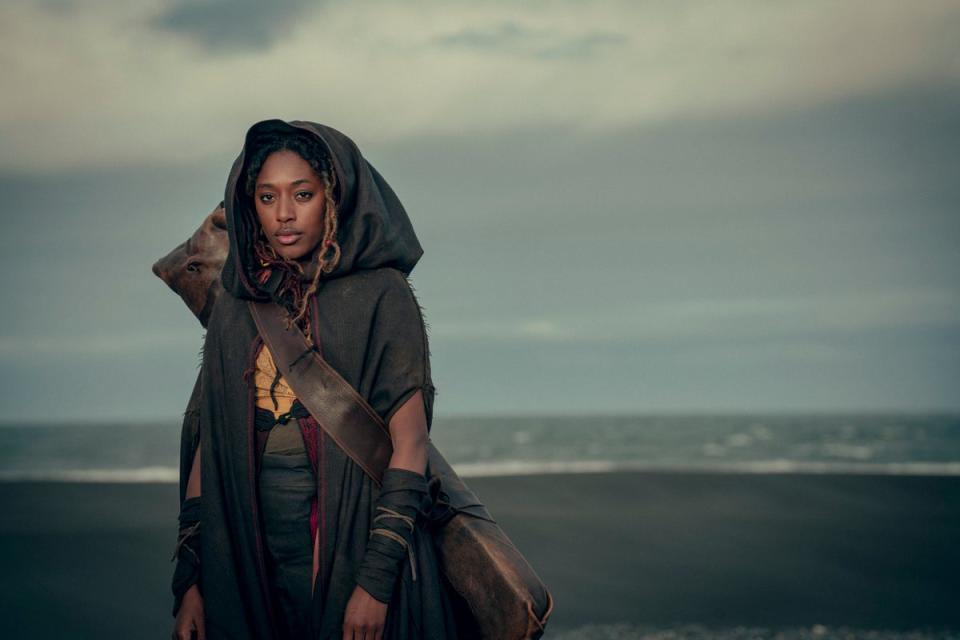Behind the scenes of The Witcher: Blood Origin with its director and stars Laurence O’Fuarain and Sophia Brown
Toss a coin to your Netflix subscription, because this Christmas a brand new Witcher series will be making its way back onto our screens.
But cast aside thoughts of a certain white-haired ruffian laying waste to monsters with a flick of his sword, because The Witcher: Blood Origin is not like any Witcher series youâve seen before. Set 1,200 years before the appearance of Geralt of Rivia (Henry Cavill, at least until the end of season 3, yet to be released), this story is one of elves, blood and the Conjunction of the Spheres: the cataclysm that introduced monsters and humans to a world of elves and dwarves.
Produced by superfan Declan de Barra (who was also a writer for the original Witcher Netflix series), the series in its entirety was actually mapped out in The Witcherâs writing room during a brainstorming session.
In a recent conversation with EW, De Barra recounted how the team created a whiteboard describing how the Conjunction of the Spheres would have happened â and what the world would have looked like beforehand, going on the scant clues in Andrzej Sapkowskiâs original Witcher books.

So when the call came to direct Blood Origin, De Barra knew what to do. "I was like, âF*** yeah!â and then literally sat in a café and scribbled it down on a napkin," he told EW, adding that the end product âhasnât really changed muchâ since then.
"Itâs normally months and months and reams of paper and crying and gnashing your teeth and clawing your skin off. It never really flows this easily."
The end product features Laurence OâFuarain and Sophia Brown as the two protagonists Fjall and Ãile, elves from different clans (Dog and Raven respectively) who join forces as the elven kingdoms of Pryshia and Xintrea fall into chaos.
The result is a whirlwind journey through a whole lot of Witcher lore, including the origins of a few key characters (which Iâm not allowed to reveal for spoiler reasons) and the creation of the first-ever Witcher.
Itâs a lot for one four-episode miniseries to address, but both actors are full of praise for the world that De Bara has created. âAlthough it is set within the Witcher world, itâs very much its own entity, it has its own spirit,â OâFuarain tells me. âWe kind of made it our own - and although itâs vaguely touched upon in the books, Declan was able to expand on what was there and give his own stamp to it.â
That includes, as De Barra says, a world which is more technologically advanced than the current Witcher universe, but not without its own issues. âIn a weird way, they were enlightened, but it had its problems,â he told EW. âThere was massive social stratification. Thereâs highborn and lowborn, and you shall not pass from one to the other. Thatâs their form of racism, and specie-ism in terms of how the dwarves are treated. Itâs not a perfect society at all.â

Both OâFuarain and Brown are fans of the original show â OâFuarain confesses that he has played The Witcher III: Wild Hunt âon the PlayStation about three timesâ â and both still seem slightly awestruck by the fact that theyâve managed to bag these roles.
In the show, both Fjall and Ãile are seasoned warriors, so the actors (who are not) had to go to extra lengths to prepare, including, as OâFuarain says, making sure the characters seemed as real and full of depth as possible.
âWe had a lot of preparation,â OâFuarain tells me. âWe had a boot camp, we learned how to fight with axes and blades and horse ride. And it was just... it was never ending. I mean, we were well prepared for when we jumped into the Witcher world.â
The âWitcher worldâ would soon prove so all-encompassing that Brown often forgot that she was wearing her costume and would leave the set with it still on.
âOn the days that I had pointy ears⦠I went to a post box during one of our lunch breaks once and I realised someone was giving me funny looks,â she remembers. âI thought maybe they just hadnât, you know, [maybe they thought] I was a new person in the area. And it turns out actually I forgot I had the elf ears on.â
Though OâFuarain and Brown play the protagonists of Blood Origin, they have been joined by an all-star supporting cast, including Minnie Driver, Lenny Henry (who plays an evil druid, of all things) and Michelle Yeoh. She plays Scian, a Ghost Clan swordmaster who joins forces with Fjall and Ãile, and in our interview the pair are full of praise for her.

âJust to be able to lean on her resource of knowledge was incredible,â Brown says. âShe really silently guided us, with our characters and as actors. So she [was] just everything I think we needed and was so calm and easy going with it⦠I feel honoured to be alongside her in a film.â
Though 2022 has proved to be a boom year for fantasy â both House of the Dragon and The Rings of Power (also starring Henry, as Harfoot leader Sadoc Burrows) launched within weeks of each other â both actors are firm that thereâs a space for The Witcher: Blood Origin in an already-crowded market.
âWe have got epic fight scenes like Game of Thrones and Lord of the Rings, but I think thatâs kind of where the similarities end,â Brown says. âThe Witcher universe is so rich and so epic in its own right, and thatâs why the fans love it.â
âThere is that sort of expectation, but we know the uniqueness that The Witcher has, and so we run and have ran with it.â
The Witcher: Blood Origin will be streaming on Netflix from December 25

 Yahoo Sport
Yahoo Sport 





































